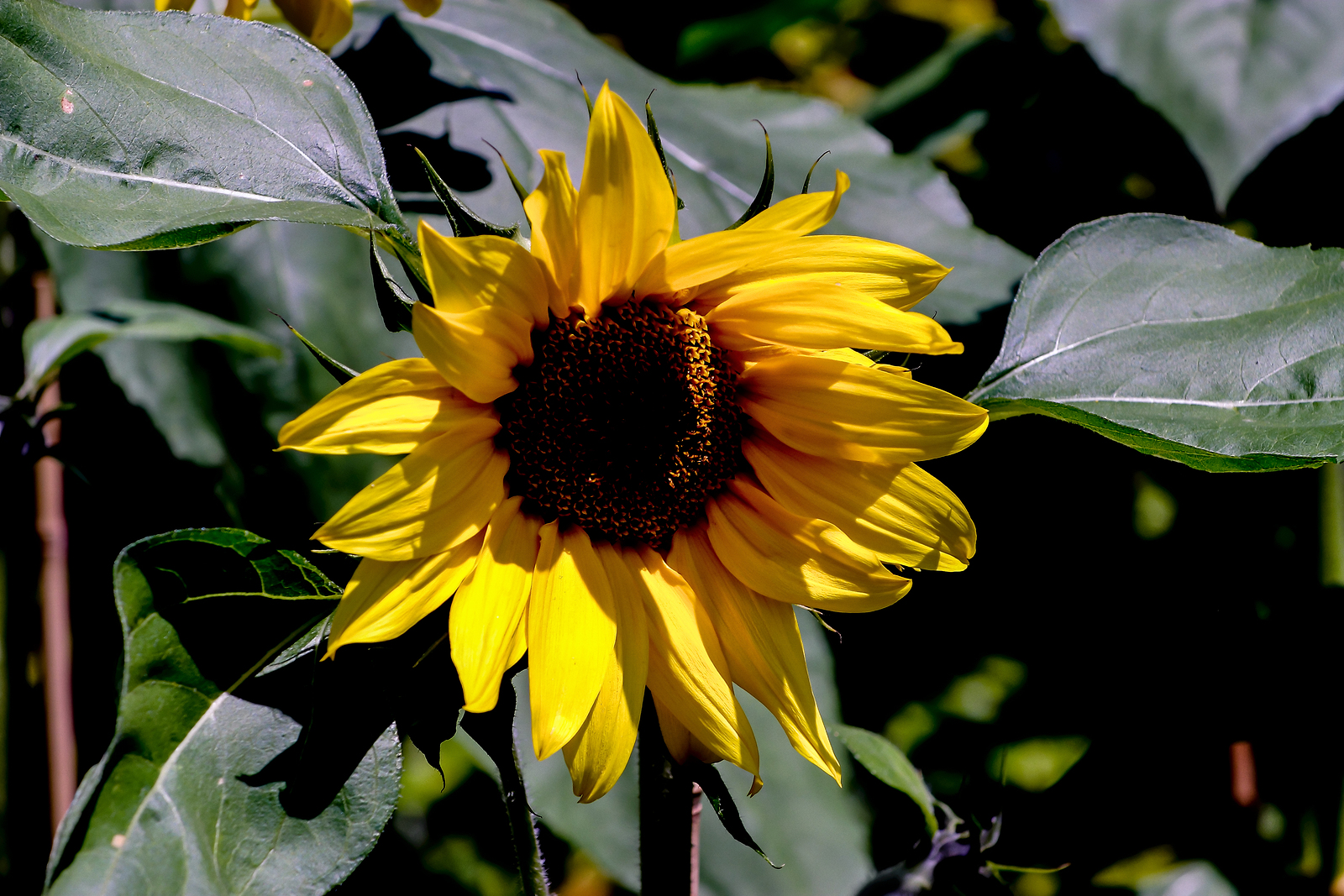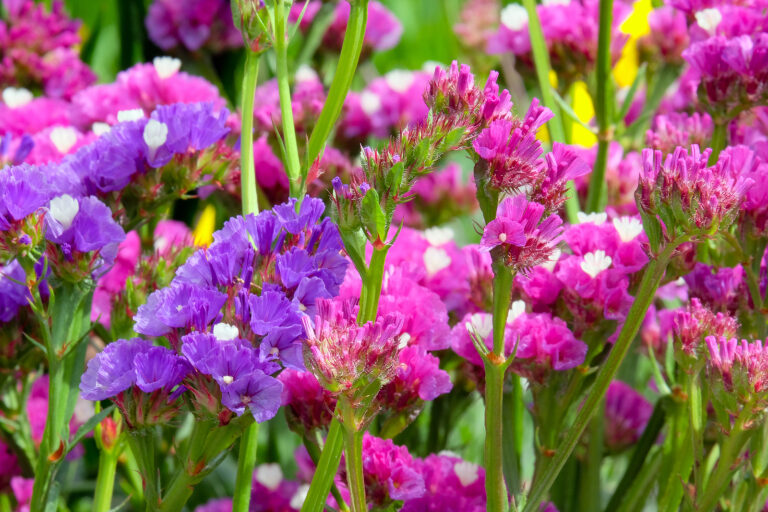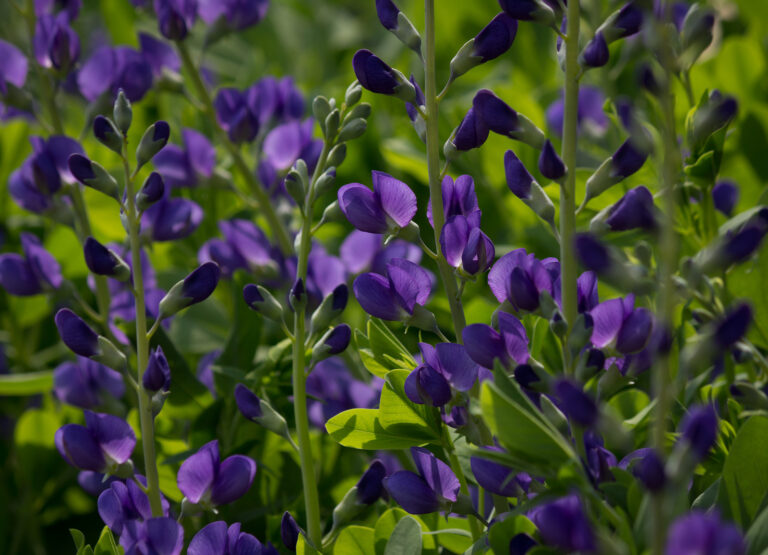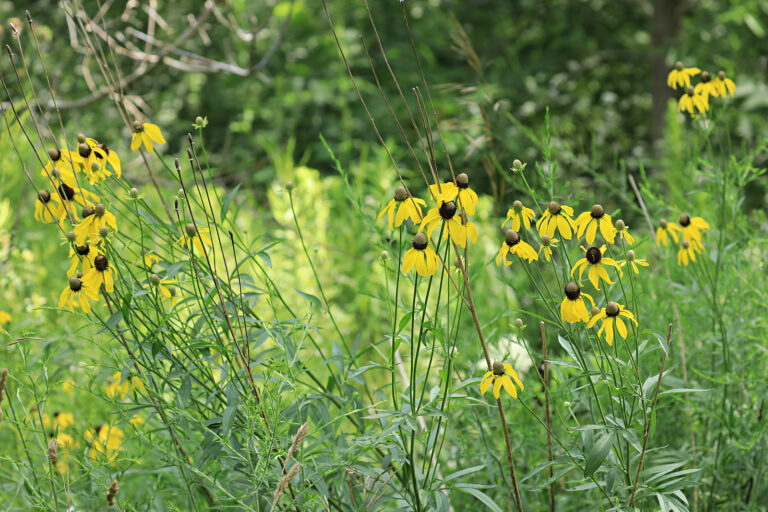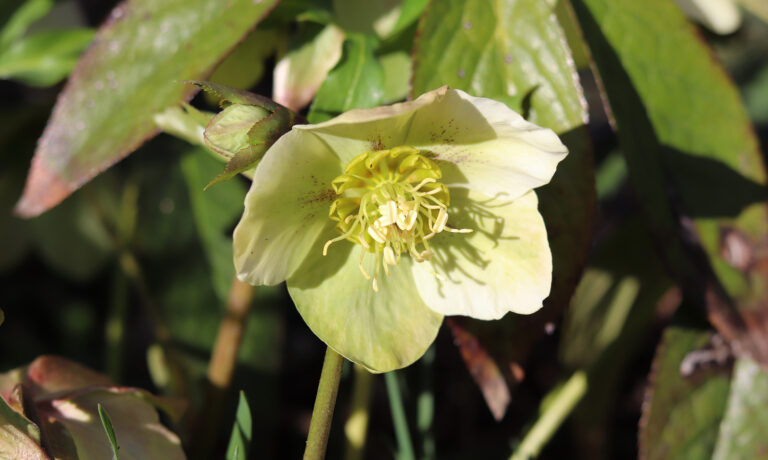How to Grow Sunflower — Helianthus
Sunflowers–botanical name Helianthus–are grown for their bright yellow ray florets and edible seeds. There are both annual and perennial sunflowers available in a wide color range. Some have smaller flowers; others have very large flower heads.
The Helianthus genus numbers nearly 80 species. There are tall often coarse plants that can be planted as windbreaks and may look out of place in a small garden as well as shorter, demure plants suited for containers. The daisy-like flowers consist of ray florets, or “petals”, surrounding the dense center of disk florets that produce the seeds.
All Helianthus species flower from late summer to early autumn except for Helianthus salicifolius which blooms in early autumn. The flowers attract bees and the large edible seeds attract birds, especially finches into the garden.
Perennial Helianthus sunflowers grow from spreading rhizomes and are often clump-forming. Helianthus tuberous is grown for its knobbly edible tubers and is commonly known as Jerusalem artichoke or sunflower.
Garden Success Products at Amazon:
- 10 pcs Stainless Steel Garden Hand Tool Set
- Flexi Hose with 8-inch Nozzle
- Gorilla Cart 4 Cu. Ft, 300-pound Capacity
- Neem Bliss 100-% Cold Pressed Neem Oil
- Safer Brand Insect Killing Soap
- Wildflower Seed Mix Attracts Hummingbirds and Butterflies
- Eden Brothers All Perennial Seed Mix

Get to know Helianthus — sunflower
- Plant type: Annual or perennial
- Growing Zones and range: Annuals in all zones; perennials in zones 4 to 9
- Hardiness: Hardy to -20F (-29°C); plants die back in winter
- Height and width: 18 inches 45cm) to 8 feet (2.4m) tall; 1 to 4 feet wide
- Foliage: Large oval, coarsely serrated leaves are bristly
- Flowers: Showy, daisylike flowerheads with ray florets; flowers can range from 4 to 24 inches across.
- Flower colors: Gold, pale yellow, orange, red, rust, or white; small-flowered types are sometimes banded or bicolored.
- Bloom time: Late summer to early fall
- Uses: Rear of borders, wildflower garden, native plant garden
- Common name: Sunflower
- Botanical name: Helianthus species
- Family: Asteraceae
- Origin: North, Central, and South America
Where to plant Helianthus — sunflower
- Grow sunflowers in full sun.
- Plant sunflowers in humus-rich, moist, well-drained soil. Sunflowers will grow in average garden soil.
- Sunflowers prefer a soil pH of 6.5 to 7.
Helianthus — sunflower uses and companions
- Tall sunflowers are effective in gardens with plants of similar height.
- Use tall sunflowers as a hedge or a fast-growing screen.
- Dwarf sunflowers can be massed for a colorful display.
- Good garden companions for Helianthus include Aster, Boltonia asteroides, Chrysanthemum, Erigeron, Helenium, Hemerocallis, Sedum, Solidago.
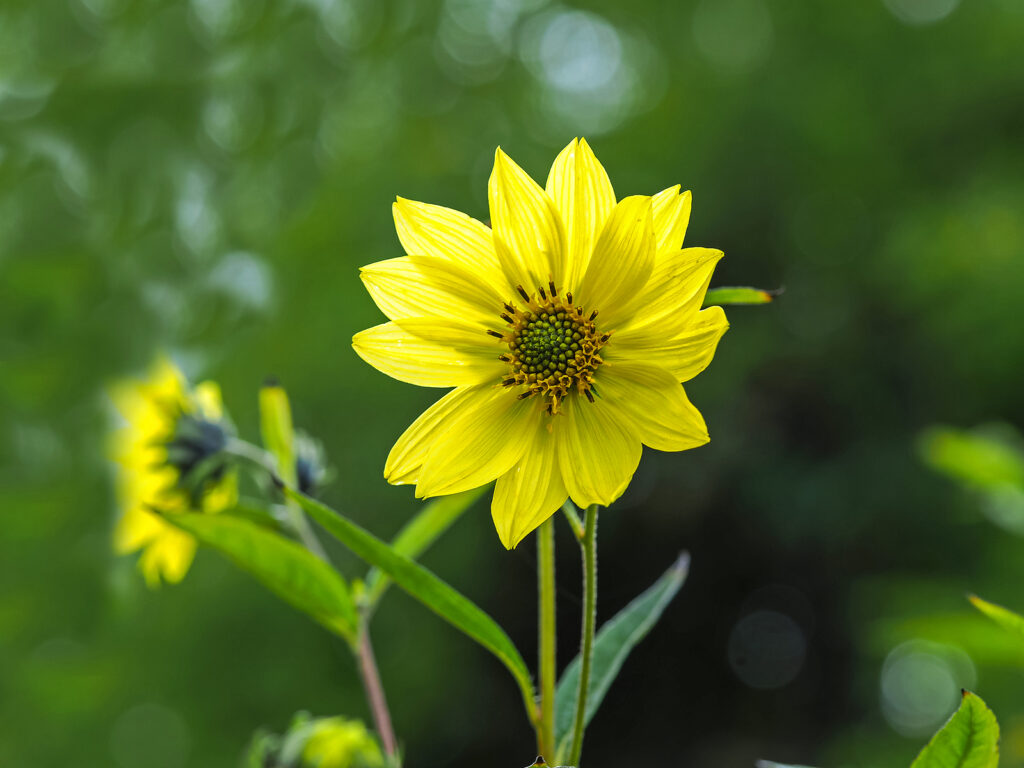
Swamp sunflower, Helianthus angustifolius
When to plant Helianthus — sunflower
- Set sunflowers in the garden in spring after the last expected frost.
- Start seed indoors 3 weeks before the last expected frost in spring.
- Sow seed outdoors after the danger of frost has passed.
Planting and spacing Helianthus — sunflower
- Sow seed indoors in flats or six-packs in seed starting mix or light potting soil.
- Sow seed 1/2 inch deep and keep them warm at 65° to 75° (18-24°C).’
- Seeds germinate in about 7 days and grow quickly. Grow in bright sunlight or a few inches below fluorescent light.
- Sow seed outdoors in evenly prepared soil; plant seeds 4 inches (10cm) apart.
- Thin or transplant seedlings when they are 4 inches tall. Harden off plants for several days before transplanting them into the garden.
- Space perennial sunflowers 18 to 24 inches (45-61cm) apart.

How to water and feed Helianthus — sunflower
- Keep the soil evenly moist for sunflowers.
- Water frequently if the soil is dry; taper off the water as plants get taller and sturdier.
- Fertilize sunflowers every 6 weeks or add a slow-release fertilizer to the soil in spring.
Helianthus — sunflower care
- Mulch around sunflowers to conserve soil moisture and prevent weeds.
- Trim spent flowers to promote new blooms.
- Divide sunflowers every 2 to 4 years as needed.
- Wind damage can be stemmed by planting sunflowers out of the prevailing breeze and staking plants.
- To save seeds for winter bird food, remove heads as soon as the seeds have matured.
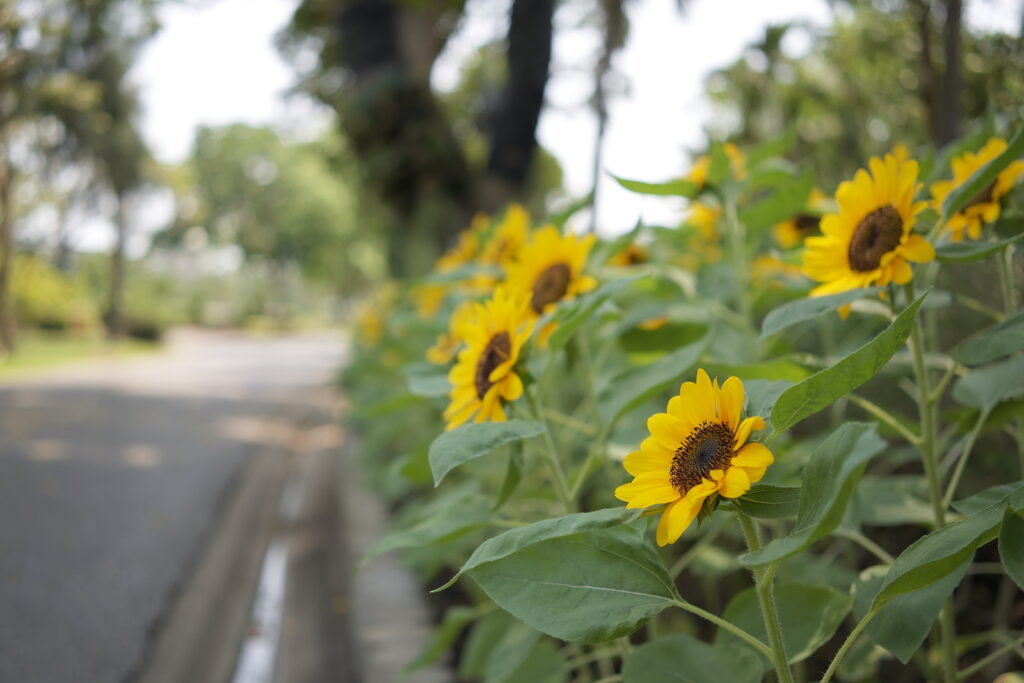
Helianthus — sunflower pests and diseases
- Sunflowers can be bothered by squirrels, birds, and other wildlife. Discourage these animals by applying powdered cayenne pepper mixed with water and a bit of vegetable oil to the ripening flower heads.
- Mildew can be treated with a fungicide.
Helianthus — sunflower propagation
- Sow seeds of annual sunflowers in mid-spring.
- Sow seeds at about 60°F (16°C) for best germination. Seeds germinate in about 10 days.
- Divide perennials in early spring or in late autumn if the soil is not too wet.
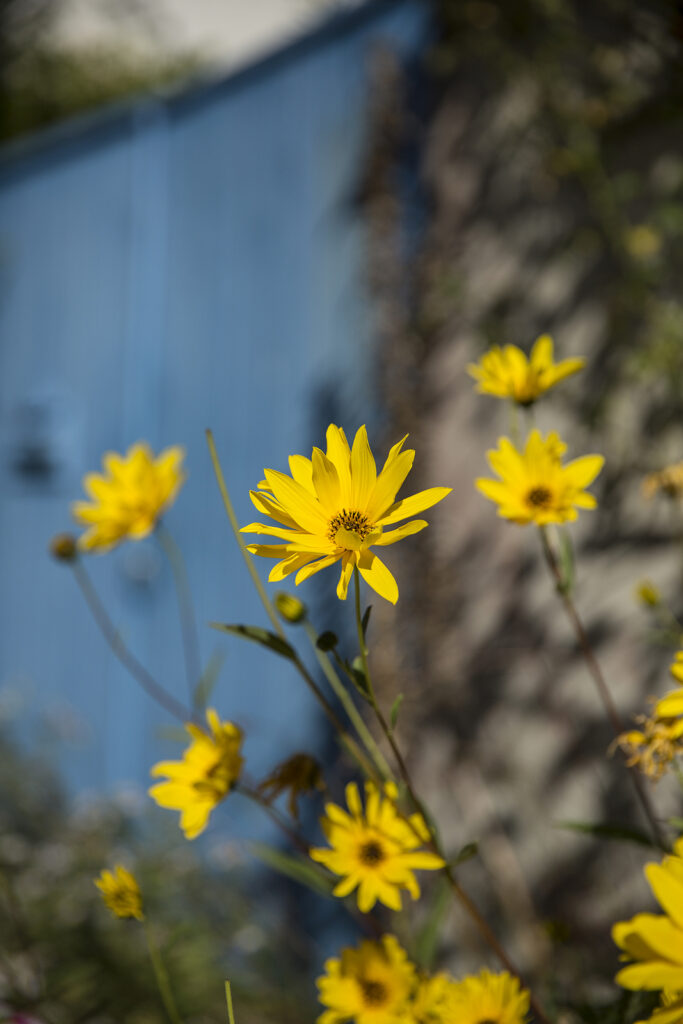
Helianthus — sunflower varieties to grow
- Helianthus angustifolius, swamp sunflower: Perennial grows 5 to 10 feet tall with narrow leaves; bright yellow daisy flowers to 3 inches across with dark brown centers; adapts well to gardens.
- H. annus, common sunflower: Annual in all zones; rough, hairy plant with 2- to 3-inch wide flower heads; some cultivars grow to 10 feet tall and have 8 to 190-inch wide flower heads; large-flowered types need humus-rich soil.
- H. atrorubens, dark-eyed sunflower: Perennial grows 5 to 6 feet tall with coarse, bristly foliage and 2-inch wide yellow flowers with dark purple centers; ‘Monarch’ cultivar has cactus-form flowers.
- H. maximilianii: Perennial grows to 10 feet tall topped with narrow spires of 3-inch wide yellow flowers.
- H. x multiflorus: Perennial grows to 5 feet tall with numerous 3-inch wide flower heads with yellow centers; good cutting flowers; cultivars include ‘Capenoch Star’ and ‘Loddon Gold.’
- H. salicifolius: Perennial similar to H. angustifolius with narrower, willowy, drooping leaves.
- H. tuberosus, Jerusalem artichoke, sunchoke: Perennial; tubers are edible; the plant grows to 10 feet tall with bright yellow flower heads; oval leaves to 8 inches long; spreads readily; harvest tubers every year.
Helianthus frequently asked questions
Q: I want to grow sunflowers, but there is no room for tall sunflowers in my garden. Any suggestions?
A: The tall sunflower Helianthus giganteus grows to 12 feet tall; it’s a perennial often grown as an annual. For a lower-growing sunflower plant Helianthus annus. Varieties of this annual fro four to six feet tall and you will find some even shorter such as Sunbright and Teddy Bear.
Q: Should I start sunflowers indoors?
A: Sunflowers germinate and grow very quickly. It is not necessary to start seeds indoors. Sow seeds outdoors after all danger of frost has passed.
Q: My sunflowers did not bloom well last year. Why?
A: You may have overfertilized with a fertilizer high in nitrogen. Also, if the summer was cool, that would cause poor flowering. Do not overfertilize sunflowers and plant them in the sunniest spot.

